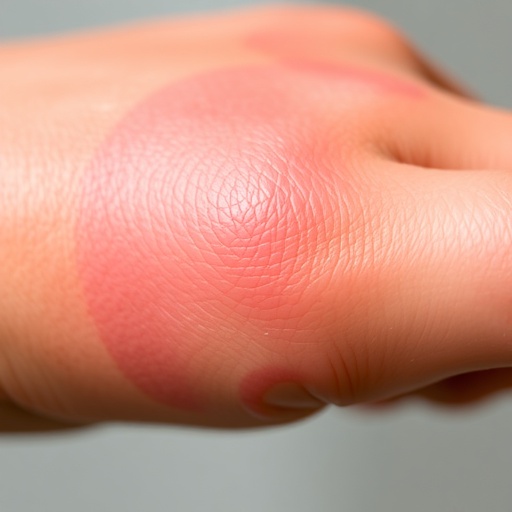In a groundbreaking study published in “Advances in Therapy,” researchers Zhong, Lan, and Cai have conducted a comprehensive network meta-analysis evaluating the efficacy and safety of various electrical stimulation therapies for the treatment of diabetic ulcers. This innovative work shines a spotlight on a significant health issue that affects millions of individuals worldwide, especially those with diabetes. Diabetic ulcers are not only painful but can lead to severe complications including infections, amputations, and increased mortality rates if not treated adequately.
The research aimed to synthesize evidence from multiple randomized controlled trials (RCTs) to establish a clearer understanding of how different electrical stimulation modalities perform in healing diabetic ulcers. By employing sophisticated statistical techniques, the researchers were able to compare therapies that have not been directly tested against one another, making this meta-analysis particularly valuable in clinical decision-making.
Diabetic ulcers are often a consequence of diabetic neuropathy and poor blood circulation, which impede the body’s natural healing processes. This study highlights how electrical stimulation therapies can mitigate those constraints. These therapies work by promoting cellular activity, enhancing blood flow, and stimulating nerve function, which collectively accelerate the wound healing process. The findings reveal a range of efficacy levels among the different modalities employed in treating these challenging ulcers.
Among the electrical stimulation modalities reviewed are pulsed electromagnetic fields (PEMF), transcutaneous electrical nerve stimulation (TENS), and high-voltage pulsed current (HVPC). Each of these methods operates by creating an electrical field around the ulcer, which is believed to stimulate the surrounding tissues and promote healing. While all therapies showed some promise, the analysis indicated notable differences in their overall effectiveness and safety profiles.
One of the key takeaways from this meta-analysis is the superiority of certain electrical stimulation techniques over others. For instance, HVPC emerged as a standout therapy, showing statistically significant improvements in healing rates compared to other modalities evaluated. Furthermore, HVPC’s safety profile was favorable, with minimal reported adverse effects, making it an attractive option for clinicians treating diabetic ulcers.
TENS, on the other hand, while effective in some contexts, was found to be less advantageous when compared to HVPC and PEMF in terms of rapid healing and promoting tissue regeneration. In many instances, TENS was associated with transient discomfort, raising questions about its practicality in diverse patient populations who may already be suffering from chronic pain.
The thoroughness of this meta-analysis provides a robust framework for healthcare providers navigating treatment options for diabetic ulcers. Clinicians are often faced with the challenge of developing tailored treatment plans that take into account individual patient factors, including existing comorbidities, ulcer characteristics, and previous treatment responses. This research gives valuable insights that can aid in those decision-making processes.
With the rising prevalence of diabetes globally, the urgency for effective interventions has never been greater. The results of this study not only provide a pathway for clinicians to optimize treatment strategies but also emphasize the importance of integrating cutting-edge technological approaches into medical practice. As electronic stimulation continues to evolve, so too does the potential for innovative solutions to age-old medical problems.
Beyond the immediate implications for healing diabetic ulcers, the findings of this research could lead to a re-examination of the role of electrical stimulation therapies in various other applications, including wound care for non-diabetic ulcers or even chronic pain management. The breadth of possibilities invites further exploration into how these technologies can be utilized in more comprehensive ways.
Moreover, the findings underscore the need for ongoing research in this area. While the comprehensive network meta-analysis provides a snapshot of current effectiveness and safety, long-term outcomes and cost-effectiveness analyses are equally important in fully assessing the viability of integrating these techniques into standard clinical practice. Future studies should aim to explore these dimensions and potentially expand the scope of electrical stimulation therapies into other areas of regenerative medicine.
In conclusion, the comparative efficacy and safety of electrical stimulation therapies for diabetic ulcers present a promising frontier in the management of this pervasive issue. This meta-analysis acts as a catalyst for further investigation and advancement in treatment options for diabetic ulcers, an area that requires urgent innovation. As press coverage expands and awareness grows, the hope is that these findings will catalyze not only clinical application but also inspire ongoing research that pushes the boundaries of what is possible in healing and regeneration.
In a world where medical advancements are essential, the integration of electrical stimulation therapies into treating diabetic ulcers represents a significant leap toward better patient outcomes and enhanced healing processes. As the healthcare community digests these findings, it is imperative to consider how these insights can influence current practices and lead to improved quality of life for those afflicted with diabetic ulcers.
In summary, this extensive analysis serves to illuminate the path ahead in treating diabetic ulcers with electrical stimulation therapies, shedding light on their efficacy and safety, while advocating for a future where patient-centered care is both cutting-edge and effective.
Subject of Research: Electrical stimulation therapies for diabetic ulcers
Article Title: Comparative Efficacy and Safety of Electrical Stimulation Therapies for Diabetic Ulcers: A Network Meta-analysis of Randomized Controlled Trials.
Article References:
Zhong, J., Lan, Y. & Cai, Z. Comparative Efficacy and Safety of Electrical Stimulation Therapies for Diabetic Ulcers: A Network Meta-analysis of Randomized Controlled Trials.
Adv Ther (2025). https://doi.org/10.1007/s12325-025-03380-8
Image Credits: AI Generated
DOI:
Keywords: Electrical stimulation therapies, diabetic ulcers, network meta-analysis, randomized controlled trials, wound healing.




